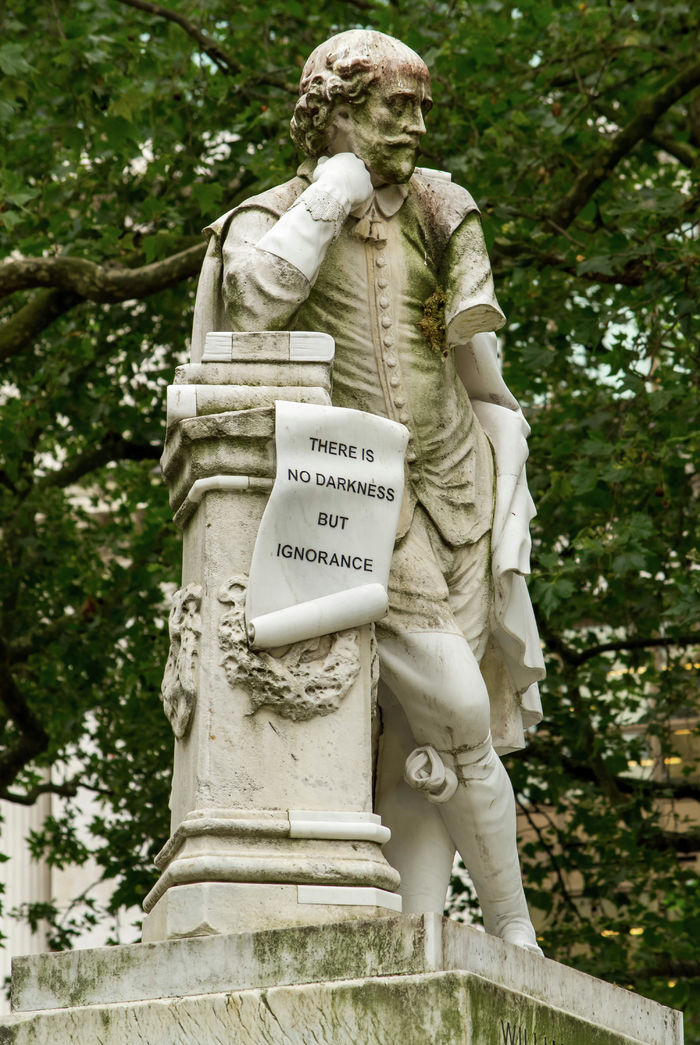Hubble, Bubble, Toil and the Trouble with Film Adaptations of Macbeth
Alex Clark explores the various film adaptations of Shakespeare’s Macbeth in an attempt to find out why plays so often struggle to be successfully translated onto screen.
I’m starting to think I have a Macbeth problem. Over the last three years or so, I’ve watched at least twelve different adaptations of the Scottish Play, and with Joel Coen’s The Tragedy of Macbeth on the horizon I don’t see myself stopping any time soon. With all that time spent watching what is ostensibly the same thing over and over again, let’s take a look at what truly makes a good film adaptation of a play: what works in these films, and what doesn’t?
“...the greatest tension within a cinematic adaptation of a stage play: how do you replicate the effect of a live performance on a screen?”
Firstly, I think some semblance of grouping would help. Across my watching, I’ve seen three main types of adaptation; the direct stage-to-film import, the stage-reminiscent film and the plot transplant. The first two of these are relatively self-explanatory – versions such as Trevor Nunn’s and Rupert Goold’s are essentially filmed versions of a stage production, literally on set or in a theatre-like form respectively, while the stage-reminiscent adaptation includes largely stage-centric concepts but presents them immersively, like Orson Welles’ or Justin Kurzel’s versions. While these first two forms are largely focused on replicating the experience of watching the play on-stage but on a screen – featuring direct-to-camera monologues for soliloquies, stage-like effects and movements or close filmic substitutes – the latter form focuses on making the experience as cinematic as possible. This means the plot is more often than not transplanted to a ‘different’ set of characters and contexts in order to slightly distance itself from the play. Films like Akira Kurosawa’s Throne of Blood or Men of Respect are the best examples of this; the plot is clearly that of Macbeth, but the film has some sense of its own identity regardless.
These categories demonstrate what I think is the greatest tension within a cinematic adaptation of a stage play: how do you replicate the effect of a live performance on a screen? The most straightforward answer is perhaps the first – to put the performance on the screen. Yet this is far from ideal. Take the aforementioned soliloquy vs. monologue idea; on-stage, a soliloquy allows you inside the characters head and enables you to feel directly involved in their thoughts, but when on screen, it often feels like you’re being talked at rather than with. The natural replacement for the soliloquy in film is the monologue – both let you listen to the characters inner thoughts – though this too is not always perfect; having been written as soliloquies, their presentation often feels too separated for internal monologue. A balance between the two also has its own problems: Polanski’s Macbeth flits between voiceover monologue and characters speaking to themselves, giving a sense of disconnect every time each technique swaps back in. Similar comparisons could be made with the banquet ghost scene; the question is not only the usual “how do we want to portray this?” but also should be “how will this work as a film?” – and here the more straightforward adaptations tend to fall down.
“...the best moments in adaptations come when the filmmaker lets go of the direct text or representations of staging and instead focuses on the cinematic”
In my opinion, the best moments in adaptations come when the filmmaker lets go of the direct text or representations of staging and instead focuses on the cinematic. By far the best scenes in Polanski’s Macbeth are the prophecy sequence and the death of Macduff’s children – the former embraces the montaging, dreamlike power of film, while the latter simply lets the scene play out in a way it never would on stage, embracing the horrific intimacy of the scene. Now, this is far from declaring simply transplanting the film makes it better – both Men of Respect and Scotland, PA are not particularly well-made or good films, let alone adaptations of Macbeth – but when it’s done well, it’s by far more powerful on screen.
This is why in my mind no adaptation of Macbeth so far has been as powerful, well-made, and simply good as Throne of Blood. The characters are all there – Taketoki as Macbeth, Yoshiaki as Banquo and The Spirit of Spider’s Web replacing the three witches – and the tone and imagery better fits the play than many straightforward adaptations. In one scene, Taketoki is met with a hail of arrows barely missing him, building the sense of “Macbeth’s” paranoia better than Chris Ecclestone or Patrick Stewart’s worried shouting ever could on your TV.
To put it simply, the best film adaptations, as it turns out, aren’t the best due to their focus on the source material, but rather their ability to use the tools of the new medium to convey the original. What works being shown directly to the audience doesn’t work the same way in the heavily internal, visual medium of film; when you watch every small movement, Fassbender’s gasps are more effective than Orson Welles’ exaggerated horror at mention of his children. All the Macbeth I’ve watched has ironically shown me the most important thing in the adaptation isn’t Macbeth but how it’s used – not that it will stop me watching more versions.
 News / Cambridge don appointed Reform adviser23 October 2025
News / Cambridge don appointed Reform adviser23 October 2025 Arts / Why is everybody naked?24 October 2025
Arts / Why is everybody naked?24 October 2025 Comment / On overcoming the freshers’ curse22 October 2025
Comment / On overcoming the freshers’ curse22 October 2025 Arts / Why Cambridge’s architecture never lives up to the ‘dark academia’ dream 17 October 2025
Arts / Why Cambridge’s architecture never lives up to the ‘dark academia’ dream 17 October 2025 News / How much does your college master earn?17 October 2025
News / How much does your college master earn?17 October 2025










